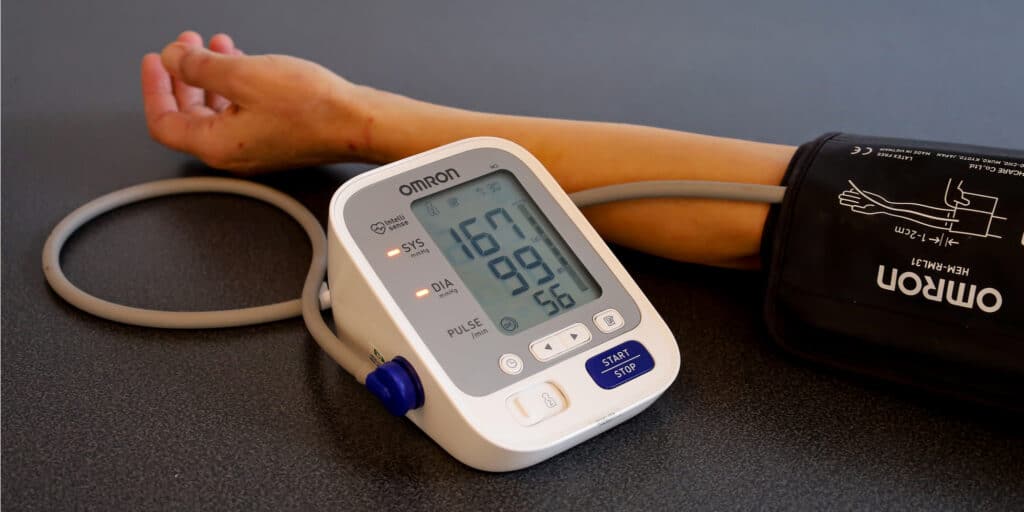A recent study published in Mayo Clinic Proceedings has found a link between socioeconomic deprivation and early cardiovascular death. The study, completed by researchers at University Hospitals (UH) Harrington Heart & Vascular Institute, is the first of its kind to show definitively that social deprivation can explain a significant proportion of the geographic variation in premature cardiovascular mortality in the U.S. Below, we’ll take a closer look at the study, and examine what the possible implications may be moving forward.
Understanding Socioeconomic Deprivation
Socioeconomic deprivation is defined by several social and economic factors including education, income, employment, and neighborhood environment. A large gap exists in explaining premature cardiovascular deaths across the U.S. which cannot be solely attributed to traditional risk factors such as high cholesterol or high blood pressure.
“Socioeconomic status plays a big role in access to preventive care, risk factor control, and incidence of disease,” said Sadeer Al-Kindi, MD, cardiologist, and co-director of the Center for Integrated and Novel Approaches in Vascular-Metabolic Disease (CINEMA) with UH Harrington Heart & Vascular Institute and the study’s senior author. “UH is committed to improving the health of all people by advancing science and human health. A large part of that is discovering the root cause of disease. With this study, we wanted to determine whether premature cardiovascular mortality is associated with socioeconomic deprivation and how premature cardiovascular mortality changed over time by social deprivation.”
With socioeconomic depravity outlined and explained, the researchers could move forward and examine the link between socioeconomic deprivation and early cardiovascular death.
Socioeconomic Deprivation and Early Cardiovascular Death: What’s the Link?

In the study, named “Socioeconomic Deprivation and Premature Cardiovascular Mortality in the United States,” researchers completed a cross-sectional analysis of U.S. county-level deaths from 1999 to 2018 using files from the U.S. National Center for Health and Statistics (NCHS).
They specifically examined data from individuals between the ages of 25 to 64 who died of cardiovascular conditions. Using a tool known as linear regression analysis (used to predict the value of a variable based on the value of another variable), they documented two metrics of socioeconomic deprivation: Social Deprivation Index (SDI) and county Area Deprivation Index (ADI).
“To our knowledge, this is the first study to demonstrate a longitudinal association between multiple integrated metrics of socioeconomic deprivation and premature cardiovascular mortality adjusted for traditional cardiovascular risk factors, while also showing potentially worsening disparities,” said Dr. Al-Kindi.
What Al-Kindi and his colleagues found was that counties with high social deprivation had the highest rates of premature cardiovascular death. What’s more, the team found that even when controlling for normal risk factors like high blood pressure, premature cardiovascular deaths shared a direct, proportional link to socioeconomic status.
“Health and structural inequities in poor communities have been ignored for too long. We now know that where you live, inequities and other components embedded in the environment are powerful determinants of mortality, often from chronic non-communicable disease. Most importantly, shedding light on this pervasive issue compels us to act upon the information,” said Sanjay Rajagopalan, MD, Chief of Cardiovascular Medicine and Chief Academic and Scientific Officer of UH Harrington Heart & Vascular Institute and co-author of the study, as well as the Herman K. Hellerstein, MD, Chair in Cardiovascular Research.
With this information, Al-Kindi and his team are hopeful that more attention will be put on ending the disparities that lower SDI and ADI communities face, including lack of access to healthcare. In the meantime, it’s important for those in these communities to learn more about cardiovascular disease, starting with the risk factors.
How to Reduce Your Risk of Early Cardiovascular Death
Lowering your risk for heart disease isn’t always easy, especially for those living in areas with higher quartiles of SDI and ADI. For many, lowering your risk for early cardiovascular death involves regular visits with your primary care physician or specialized medications to help control blood pressure or cholesterol levels down. However, this is not always feasible in low-income or underprivileged areas.
Until these socioeconomic inequalities are addressed, it’s important to understand how you can lower your risk for heart disease without medications, frequent doctor’s visits, or burning a hole in your wallet. Below are some simple, scientifically proven ways you can decrease your risk of early cardiovascular death.
Control Your Blood Pressure
High blood pressure, also called hypertension, is one of the leading risk factors for heart disease. High blood pressure usually develops over time. It can happen because of unhealthy lifestyle choices, such as not getting enough regular physical activity. Certain health conditions such as obesity or diabetes can also increase your risk for high blood pressure.
It’s important to get your blood pressure checked regularly, at least once a year for most adults, to make sure your levels are normal. However, for people in socioeconomically deprived areas, even a yearly checkup can be difficult or out of the question. In these circumstances, it’s important to utilize things like free pop-up clinics or public blood pressure machines, such as those found in pharmacies, to help monitor your blood pressure levels. While it’s important to note that public blood pressure machines aren’t a substitute for a doctor’s visit, they can be a useful tool for those who may find it difficult to see a doctor.
Other steps you can take to lower your blood pressure include:
- Limit your sodium intake
- Exercise regularly
- Try to eat healthier food options when possible
- Cut back on caffeine
- Quit smoking
Keep Your Cholesterol Levels Under Control
High levels of cholesterol can clog your arteries and increase your risk of early cardiovascular death. Your body needs cholesterol to build healthy cells, but high levels of cholesterol can increase your risk of heart disease. High cholesterol can be inherited from family members, but it’s often the result of unhealthy lifestyle choices, which means it’s not only preventable but treatable.
There are several ways you can keep your cholesterol under control, all of which can be done without frequent doctor visits, medications, or added expenses. These include:
- Eat heart-healthy foods rich in omega-3 fatty acids and low in things like saturated and trans fats
- Exercise regularly
- Quit smoking
- Maintain a healthy weight
All of these methods can be effective ways to manage your cholesterol levels, especially for those in socioeconomically-challenged areas.
Get Regular Exercise
As previously mentioned, exercise is a great way to lower both your cholesterol and blood pressure levels, thus reducing your risk for early cardiovascular death. Exercise has many benefits, including strengthening your heart and improving your circulation. Regular exercise can also help you lose weight or maintain a healthy weight, which is another common risk factor for heart disease.
To lower your risk of early cardiovascular death, regular exercise is any activity done for at least 30 minutes, for at least four to five days a week. This can include running, walking, jogging, cycling, aerobics, swimming, etc.
Limit Alcohol Consumption
Drinking too much alcohol has been linked to several health conditions, including cardiovascular disease. Alcohol is also a drink high in extra calories and carbohydrates, which may cause weight gain. According to the Dietary Guidelines for Americans, adults of the legal drinking age can choose not to drink, or to drink in moderation by limiting intake to 2 drinks or less in a day for men and 1 drink or less in a day for women, when alcohol is consumed.
Don’t Smoke
Cigarette smoking raises your blood pressure and puts you at higher risk for heart attack and stroke. If you are a smoker, quitting is the most effective way to reduce your risk of early cardiovascular death, and if you don’t smoke don’t start. While quitting smoking is easier said than done, especially for those in low socioeconomic areas, quitting is vital to a healthy, risk-free lifestyle.
What Can be Done to Combat Socioeconomic Deprivation and Early Cardiovascular Death?

When it comes to solving the issue of socioeconomic deprivation, it’s important that we examine and address the root causes, rather than simply providing temporary solutions, while still helpful to those in need. It’s also important to note that the above-mentioned at-home methods for reducing the risk of cardiovascular disease are simply not enough for people living in low-income and underprivileged areas. To make a difference, there needs to be a major change in the way we help those in need.
UH is doing just this in a multitude of ways, including through its work in the community thanks to the ACHIEVE GreatER initiative. The initiative has successfully been awarded a “transformative” $18.2 million federal grant from the National Institutes of Health’s (NIH) P50 program. This grant will facilitate medical and cardiovascular care provided directly to people living in Cuyahoga Metropolitan Housing Authority, one of the nation’s largest and oldest subsidized housing programs. Additional efforts by the study team are focused on understanding the integrated social and environmental underpinnings of premature cardiovascular disease in Northeast Ohio and nationally.
“Regardless of where they live or how much money they make, all people should have the opportunity to receive the necessary medical resources and support to have a healthier life,” said Dr. Mehdi Shishehbor, DO, MPH, Ph.D., President of UH Harrington Heart & Vascular Institute, and the Angela and James Hambrick Chair in Innovation.
While this is a big step towards ending socioeconomic disparities, it’s far from a fix-all solution. Now that we know there’s a link between socioeconomic deprivation and early cardiovascular death, the time for real change is more imperative than ever.
What Are Your Thoughts on the Link Between Socioeconomic Deprivation and Early Cardiovascular Death?
Let us know in the comments section below!
What topics related to cardiovascular disease should we cover next?
Email us your ideas at info@painresource.com, we may just feature yours in a future article!
Want even more Pain Resource content?

